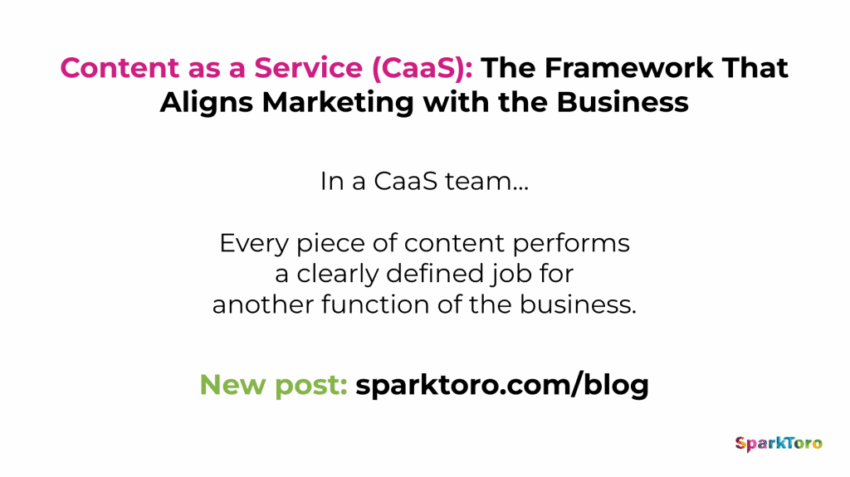TL;DR Summary of Transforming Content Strategy by Treating Content as a Service
Optimixed’s Overview: How Content as a Service Revolutionizes Business Impact
Understanding the Problem with Traditional Content Approaches
Marketing often treats content like a vending machine—producing assets simply to meet quotas or requests without clear purpose. This results in busy teams creating content that doesn’t move the business forward, leading to frustration across Sales, Marketing, and Leadership due to misalignment and unclear impact.
What is Content as a Service (CaaS)?
Content as a Service treats content as a strategic service provider to internal teams, each piece crafted to fulfill a defined job that supports business outcomes. Content becomes a client-focused service with:
- Clients: Internal teams such as Sales, Customer Success, Product, and Demand Generation.
- Jobs: The specific business problems content solves (e.g., enable sales, reduce churn).
- Service Agreements: How and when content will be used.
- Metrics: KPIs that measure real business impact, not just vanity metrics.
Benefits of Shifting to CaaS
- Reduced content volume but increased impact: Producing fewer assets that directly influence sales and customer success.
- Stronger cross-team alignment: Content teams collaborate closely with sales and other functions to understand needs and measure success.
- Clear KPIs linked to business outcomes: Metrics like sales cycle reduction, ticket deflection, or win rates replace pageviews and keyword rankings.
- Improved morale and organizational perception: Demonstrating clear wins builds trust and secures marketing’s seat at the decision-making table.
Implementing Content as a Service: Practical Steps
The article provides a detailed intake form template to align content creation with client needs, including:
- Client team and audience: Who will use the content and where they are in the buyer journey.
- Primary job to be done: The business outcome the content supports.
- Success metrics: Quantifiable targets like reducing sales stalls or support contacts.
- Distribution plan and constraints: How content will be shared and any compliance issues.
Other recommended practices include prioritizing high-impact content that addresses current business leaks, conducting discovery consultations with client teams, tracking both quantitative metrics and qualitative feedback, and regularly auditing existing content to optimize resources.
Examples of CaaS Content Pairings
- Case Studies for Sales Enablement: Metrics include win rate and sales cycle time.
- How-to Guides for Customer Success: Focus on reducing support contacts and increasing feature adoption.
- ROI Calculators for Sales & Finance: Improve late-stage conversions and CFO approvals.
- Executive Benchmark Reports for Partnerships: Drive backlinks, speaking invites, and PR mentions.
- Email Playbooks for Demand Generation: Boost form fills, MQL to SQL rates, and trials.
Conclusion
By shifting from producing content as output to delivering content as a service with clear jobs and measurable outcomes, organizations can enhance content’s effectiveness, improve internal collaboration, and ultimately accelerate business growth. This approach fosters trust between marketing and other teams and ensures content investments yield tangible results.
